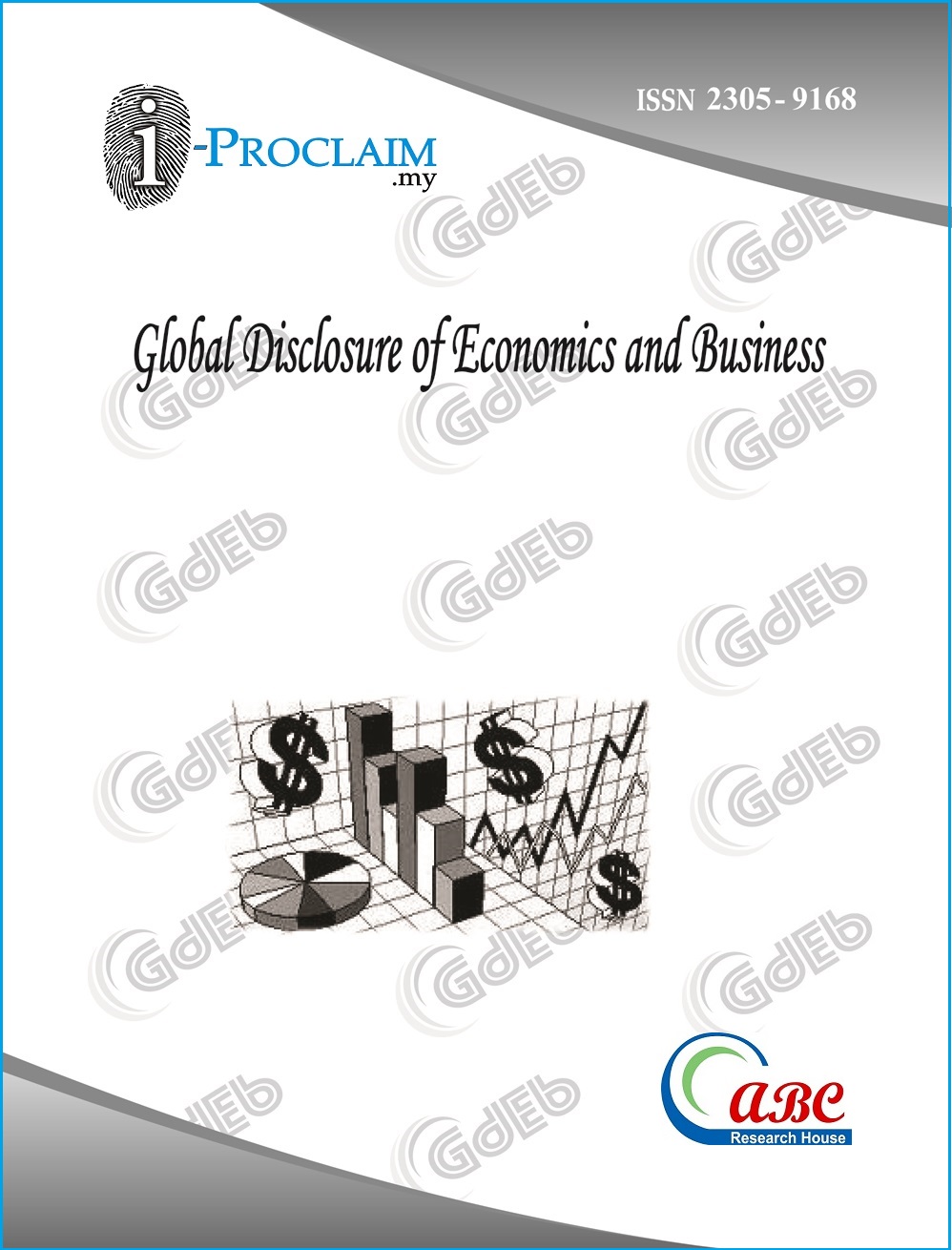Intersection of Artificial Intelligence, Machine Learning, and Internet of Things – An Economic Overview
DOI:
https://doi.org/10.18034/gdeb.v9i2.584Keywords:
Internet of Things, Artificial Intelligence, Machine Learning, Internet of EverythingAbstract
Internet of Things (IoT) has become one of the mainstream advancements and a supreme domain of research for the technical as well as the scientific world, and financially appealing for the business world. It supports the interconnection of different gadgets and the connection of gadgets to people. IoT requires a distributed computing set up to deal with the rigorous data processing and training; and simultaneously, it requires artificial intelligence (AI) and machine learning (ML) to analyze the information stored on various cloud frameworks and make extremely quick and smart decisions w.r.t to data. Moreover, the continuous developments in these three areas of IT present a strong opportunity to collect real-time data about every activity of a business. Artificial Intelligence (AI) and Machine Learning are assuming a supportive part in applications and use cases offered by the Internet of Things, a shift evident in the behavior of enterprises trying to adopt this paradigm shift around the world. Small as well as large-scale organizations across the globe are leveraging these applications to develop the latest offers of services and products that will present a new set of business opportunities and direct new developments in the technical landscape. The following transformation will also present another opportunity for various industries to run their operations and connect with their users through the power of AI, ML, and IoT combined. Moreover, there is still huge scope for those who can convert raw information into valuable business insights, and the way ahead to do as such lies in viable data analytics. Organizations are presently looking further into the data streams to identify new and inventive approaches to elevate proficiency and effectiveness in the technical as well as business landscape. Organizations are taking on bigger, more exhaustive research approaches with the assistance of continuous progress being made in science and technology, especially in machine learning and artificial intelligence. If companies want to understand the valuable capacity of this innovation, they are required to integrate their IoT frameworks with persuasive AI and ML algorithms that allow ’smart devices/gadgets’ to imitate behavioral patterns of humans and be able to take wise decisions just like humans without much of an intervention. Integrating both artificial intelligence and machine learning with IoT networks is proving to be a challenging task for the accomplishment of the present IoT-based digital ecosystems. Hence, organizations should direct the necessary course of action to identify how they will drive value from intersecting AI, ML, and IoT to maintain a satisfactory position in the business in years to come. In this review, we will also discuss the progress of IoT so far and what role AI and ML can play in accomplishing new heights for businesses in the future. Later the paper will discuss the opportunities and challenges faced during the implementation of this hybrid model.
Downloads
References
Baheti, R. and Gill, H. (2011). The Impact of Control Technology. Cyber-Physical Systems, 12, 161–166.
Bynagari, N. B. (2018). On the ChEMBL Platform, a Large-scale Evaluation of Machine Learning Algorithms for Drug Target Prediction. Asian Journal of Applied Science and Engineering, 7, 53–64. Retrieved from https://upright.pub/index.php/ajase/article/view/31
Bynagari, N. B. (2019). GANs Trained by a Two Time-Scale Update Rule Converge to a Local Nash Equilibrium. Asian Journal of Applied Science and Engineering, 8, 25–34. Retrieved from https://upright.pub/index.php/ajase/article/view/32
Bynagari, N. B., & Amin, R. (2019). Information Acquisition Driven by Reinforcement in Non-Deterministic Environments. American Journal of Trade and Policy, 6(3), 107-112. https://doi.org/10.18034/ajtp.v6i3.569
Bynagari, N. B., & Fadziso, T. (2018). Theoretical Approaches of Machine Learning to Schizophrenia. Engineering International, 6(2), 155-168. https://doi.org/10.18034/ei.v6i2.568
Donepudi, P. K. (2014). Technology Growth in Shipping Industry: An Overview. American Journal of Trade and Policy, 1(3), 137-142. https://doi.org/10.18034/ajtp.v1i3.503 DOI: https://doi.org/10.18034/ajtp.v1i3.503
Donepudi, P. K. (2015). Crossing Point of Artificial Intelligence in Cybersecurity. American Journal of Trade and Policy, 2(3), 121-128. https://doi.org/10.18034/ajtp.v2i3.493 DOI: https://doi.org/10.18034/ajtp.v2i3.493
Donepudi, P. K. (2016). Influence of Cloud Computing in Business: Are They Robust?. Asian Journal of Applied Science and Engineering, 5(3), 193-196. Retrieved from https://journals.abc.us.org/index.php/ajase/article/view/1181
Donepudi, P. K. (2018). AI and Machine Learning in Retail Pharmacy: Systematic Review of Related Literature. ABC Journal of Advanced Research, 7(2), 109-112. https://doi.org/10.18034/abcjar.v7i2.514 DOI: https://doi.org/10.18034/abcjar.v7i2.514
Donepudi, P. K. (2019). Automation and Machine Learning in Transforming the Financial Industry. Asian Business Review, 9(3), 129-138. https://doi.org/10.18034/abr.v9i3.494 DOI: https://doi.org/10.18034/abr.v9i3.494
Fadziso, T., & Manavalan, M. (2017). Identical by Descent (IBD): Investigation of the Genetic Ties between Africans, Denisovans, and Neandertals. Asian Journal of Humanity, Art and Literature, 4(2), 157-170. https://doi.org/10.18034/ajhal.v4i2.582
Lee, E. A. and Seshia, S. A. (2016). Introduction to Embedded Systems: A Cyber-Physical Systems Approach. MIT Press.
Manavalan, M. (2018). Do Internals of Neural Networks Make Sense in the Context of Hydrology? . Asian Journal of Applied Science and Engineering, 7, 75–84. Retrieved from https://upright.pub/index.php/ajase/article/view/41
Manavalan, M. (2019). Using Fuzzy Equivalence Relations to Model Position Specificity in Sequence Kernels. Asian Journal of Applied Science and Engineering, 8, 51–64. Retrieved from https://upright.pub/index.php/ajase/article/view/42
Manavalan, M., & Donepudi, P. K. (2016). A Sample-based Criterion for Unsupervised Learning of Complex Models beyond Maximum Likelihood and Density Estimation. ABC Journal of Advanced Research, 5(2), 123-130. https://doi.org/10.18034/abcjar.v5i2.581
Manavalan, M.. (2019). P-SVM Gene Selection for Automated Microarray Categorization. International Journal of Reciprocal Symmetry and Physical Sciences, 6, 1–7. Retrieved from https://upright.pub/index.php/ijrsps/article/view/43
Neogy, T. K., & Bynagari, N. B. (2018). Gradient Descent is a Technique for Learning to Learn. Asian Journal of Humanity, Art and Literature, 5(2), 145-156. https://doi.org/10.18034/ajhal.v5i2.578
Yang, L. T., Di Martino, B., and Zhang, Q. (2017). Internet of Everything. Mobile Information Systems, vol. 2017. DOI: https://doi.org/10.1155/2017/8035421
--0--










